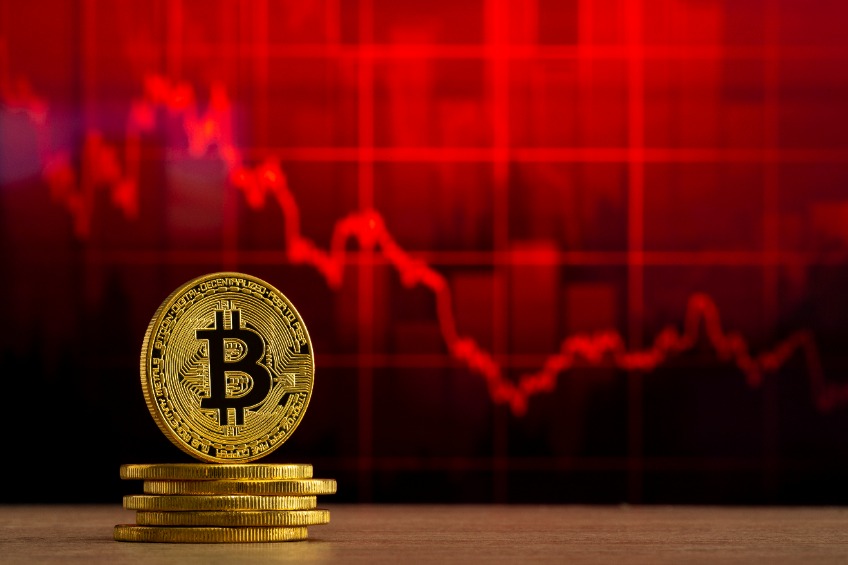
Key Takeaways
- Bitcoin has closed the year down 64%, its worst year since 2018
- This bear market is different, as for the first time ever in Bitcoin’s existence, the wider economy is also pulling back
- Bitcoin’s correlation with the stock market is extremely high, proving it trades like a high-risk asset
- Fans will hope this link can be broken, but currently, it presents as a daunting macro climate for Bitcoin and one that has unsurprisingly crushed its price over the last year
Cryptocurrency investors will be happy to close the book on a dire 2022.
Prices across the asset class collapsed, as the world transitioned into a new interest rate paradigm, with the era of low-interest rate, cheap money officially over. Risk assets got crushed, and there are few investments further out on the risk spectrum than crypto.
Looking at Bitcoin, the world’s flagship cryptocurrency closed the year at $16,547, compared to the $46,311 it entered the year at. That translates to a fall of 64%. But how bad was the is performance historically, for an asset which is notorious for both explosive gains and bone-chilling losses?
2022 the second-worst year for Bitcoin
Looking at annual returns since 2011, the first year when sufficient liquidity and price data were available, shows that Bitcoin’s 64% drop this year was its second-worst number, behind only the 72% drop in 2018. The latter came after a run-up towards $20,000 in late 2017, the first time Bitcoin truly entered mainstream consciousness.
Amid this context, the numbers show that 2022 could just be another year, right? Bitcoin has fallen many a time previously, and always rebounded. Unfortunately, there is a catch this time.
Bitcoin experiencing a recession for first time ever
Satoshi Nakamoto published the Bitcoin whitepaper in 2008, I the aftermath of the Great Financial Crisis. Engrained in the Genesis Block is a reference to British newspaper the Times: “The Times 03/Jan/2009 Chancellor on brink of second bailout for banks.”
Frist trading in 2009, Bitcoin was therefore propelled into this post-crisis environment, a climate of zero (or even negative) interest rates, a warm money printer and explosive returns in risk assets. A quick look at stock market returns since Bitcoin’s launch shows that, until this year, things had been plain sailing.
And so for the first time in its history, Bitcoin is experiencing a pullback in the wider economy. The money printer has been turned off and interest rates have been hiked, with the Federal Fund rate now 4.25% – 4.5%.
This is vitally important because despite what some Bitcoin evangelicals may argue, Bitcoin trades as a high-risk asset. The price data simply proves this without a shadow of a doubt, as its correlation with the S&P 500 is sky high – and only rose last year after interest rates began to be hiked in April 2022, as I wrote about in this piece, and shown on the graph below.
Previous bear markets are not the same
This is why extrapolation of prior bear market bouncebacks for Bitcoin is naïve. The world is a different place now than at any other time in Bitcoin’s history. The free money up-only market could not persist forever, and now it is time for Bitcoin to show the world what it is made of.
Bitcoin is often compared to gold, but the shiny metal has proven over a long sample space that it can be considered a hedge and a reputable store of value through which investors can preserve their wealth. Plotting the returns of gold historically below show clearly that it rises in times of uncertainty. This is the kind of chart that you want to see as we enter a recession.
Unfortunately, Bitcoin has to date traded with an uber-high correlation with the stock market. In time, advocates hope that this link will be broken. That is up for debate, but what is for sure right now is that Bitcoin is as far from a “hedge” as it could possibly be.
If the Federal Reserve turns dovish and eases off on interest rate hikes, you can be sure that asset prices will jump again – and those further out on the risk spectrum, like tech stocks and Bitcoin, will be among the big winners.
In the long-term, the trillion-dollar question is whether this correlation can be broken and whether Bitcoin can achieve the coveted store of value status.

